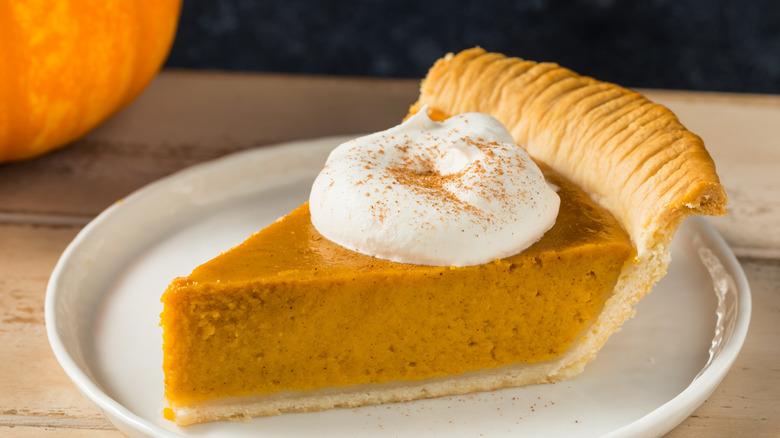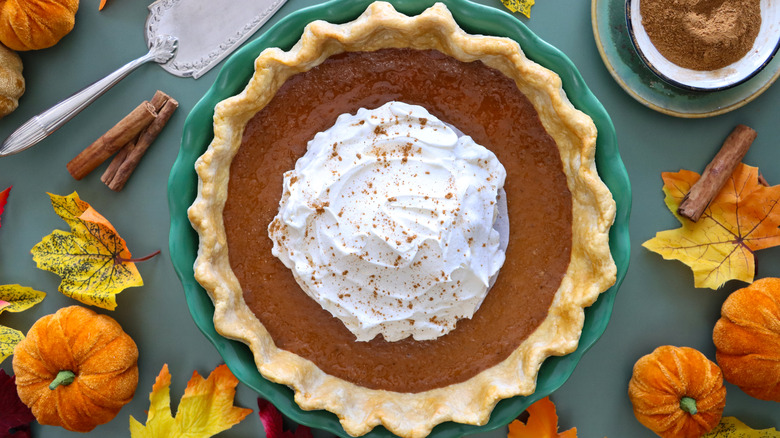Start Adding Lemon Juice To Pumpkin Pie And You'll Never Go Back
Although they are found year-round, pumpkins are truly iconic in the fall, when their hearty flavor is used in everything from PSLs (pumpkin spice lattes) to breads and scones — and of course pies. There is a strong argument for enjoying pumpkin more times in the year, but October, November, and December are the peak season for the underused orange gourd.
Since we wait all year for this moment, the pressure mounts for bakers to make delicious, memorable pumpkin pies to hold people over until this time next year. Whether your crust is homemade or from a package doesn't matter as much since pumpkin pie is really all about the creamy filling, and there are some tips to make yours even better.
Many home bakers may be familiar with adding lemon juice to fruit pie fillings, especially apple, to prevent the slices from oxidizing, but the citrus does much more than just prevent fruit from turning brown. Lemon juice amplifies a pie's flavors and balances out all the sugar with a bit of tartness, which is why it should also be included in pumpkin pie.
If you worry it might affect the taste, know that a small amount of freshly-squeezed lemon juice won't make the custard filling "lemony"; you'd need to add lemon zest to get that bold flavor. Instead, the addition will brighten the earthy, veggie filling, which traditionally relies on sugar to enhance it.
More pumpkin pie baking tips
Beyond just using lemon juice, there are other tips to help make your pumpkin pie perfect. One of the best is to prepare the filling a day in advance and allow the ingredients to marry overnight, in a covered container, to develop the deepest flavor. Since pre-made spice mixtures can sit on supermarket shelves too long, it's also recommended to make your own pumpkin pie spice, blending cinnamon, clove, nutmeg, allspice, and ginger. This lets you control the dominant flavors and experiment with other spice additions too, like cardamom, curry, or Chinese 5-spice for a unique spin.
Another good idea is using a digital thermometer to indicate when the pie is done. Over-baking custard-filled pies is a common mistake as you want the pie's center to still be jiggly when you take it out of the oven, which can be unnerving. If you don't bake pumpkin pie often, you may not be familiar with how it looks and err on the side of caution by baking it for a few more minutes, which can result in a dry, cracked dessert.
When pumpkin pie is done baking, the filling will be set roughly two inches from the crust but wobbly in a four-inch circumference from the center. Using a digital thermometer takes the guesswork out. When baked, the pie's center should register between 160 to 170 degrees Fahrenheit. It will continue to cook and firm as it cools on the counter. When ready to serve, place a strategic dollop of whipped cream to disguise any cracks or holes, and the pie will be perfect and ready to devour.


